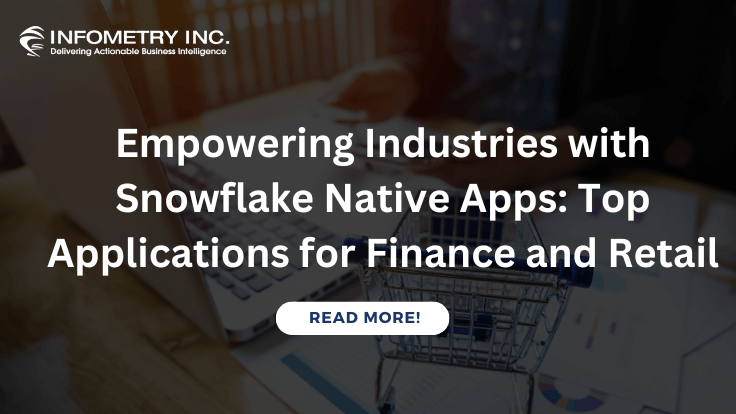
How INFOFISCUS Supply Chain Analytics Elevates Your Supply Chain Strategy?
February 19, 2024
INFOFISCUS Marketo Data Replication Unveils New Possibilities
February 28, 2024In the fast-paced world of data-driven decision-making, ensuring the quality of your data is paramount. Poor data quality can lead to flawed insights and hinder business growth. To address this challenge, many organizations are turning to data enrichment solutions, with Infometry emerging as a leader in this space. In this blog, we will explore a comprehensive 12-step guide to improving data quality using data enrichment techniques, with a special focus on the capabilities of Infometry.
Understanding Data Enrichment:
Data enrichment is the process of enhancing raw, incomplete, or outdated data with additional information to make it more valuable and accurate. This enrichment can involve appending missing details, validating existing information, or incorporating external data sources. The goal is to create a comprehensive and up-to-date dataset that empowers organizations to extract meaningful insights.
The Importance of Data Quality:
High-quality data is the backbone of successful business operations. It ensures that decisions are based on accurate, relevant, and timely information. Without reliable data, organizations risk making flawed decisions that can have far-reaching consequences. Data quality issues can arise from various sources, including human error, system glitches, or the natural decay of information over time.
12 Must-Follow Steps to Improve Your Data Quality with Data Enrichment
Step 1: Understand Your Data Landscape
Before diving into data enrichment, it’s crucial to have a clear understanding of your existing data landscape. Identify key data sources, data types, and potential gaps in information. This foundational step sets the stage for effective data enrichment.
Step 2: Define Data Quality Metrics
Establish measurable metrics to assess the quality of your data. Common metrics include accuracy, completeness, consistency, and timeliness. Clearly defined metrics will serve as benchmarks throughout the data enrichment process.
Step 3: Choose the Right Data Enrichment Tool
Selecting a reliable data enrichment tool is critical. Infometry, a leading player in the field, offers a robust platform with features such as data profiling, cleansing, and enrichment. Its user-friendly interface and advanced algorithms make it a top choice for organizations aiming to enhance their data quality.
Step 4: Identify Enrichment Needs
Pinpoint specific areas where data enrichment can add value. This could include updating outdated information, standardizing formats, or appending missing details. Understanding your enrichment needs guides the customization of Infometry’s capabilities to align with your goals.
Step 5: Cleanse and Standardize Data
Leverage Infometry’s data cleansing and standardization features to eliminate inconsistencies and errors. Clean, standardized data forms the foundation for accurate enrichment.
Step 6: Implement Data Profiling
Utilize Infometry’s data profiling tools to gain insights into the quality of your data. Profiling helps identify patterns, anomalies, and outliers, enabling more informed decisions regarding enrichment strategies.
Step 7: Integrate External Data Sources
Enrich your dataset by integrating relevant external data sources. Infometry facilitates seamless integration, allowing you to access a vast array of external information to enhance the depth and accuracy of your data.
Step 8: Employ Machine Learning Algorithms
Infometry’s advanced machine learning algorithms can predict missing values and recommend enrichment strategies. Harnessing the power of AI ensures continuous improvement in data quality over time.
Step 9: Validate Enriched Data
Perform rigorous validation checks to ensure the accuracy and reliability of enriched data. Infometry’s validation features enable real-time verification, reducing the risk of errors in downstream processes.
Step 10: Monitor and Maintain Data Quality
Establish ongoing monitoring processes to track data quality post-enrichment. Infometry’s monitoring tools provide insights into changes and trends, allowing for proactive maintenance of data quality.
Step 11: Invest in Data Quality Training
Train your teams on best practices for data quality management. Infometry offers training programs to empower your workforce with the skills needed to maintain high data quality standards.
Step 12: Continuously Optimize and Evolve
Data quality improvement is an ongoing process. Regularly review and optimize your data enrichment strategies based on evolving business needs and technological advancements. Infometry’s commitment to innovation ensures that you stay ahead in the dynamic landscape of data management.
Conclusion:
In conclusion, elevating data quality through effective data enrichment is a strategic imperative for modern businesses. Infometry’s comprehensive suite of tools empowers organizations to navigate this journey seamlessly. By following this 12-step guide, you can unlock the full potential of data enrichment and position your business for success in the era of data-driven decision-making.




